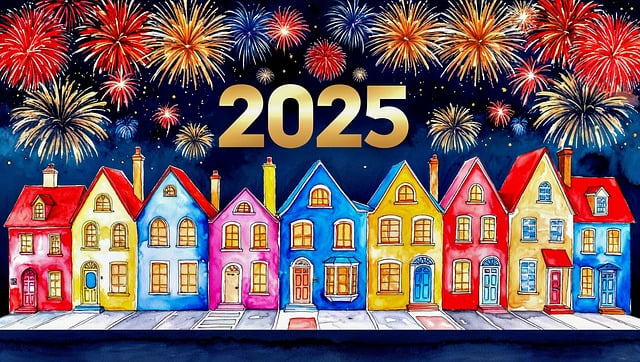
Just One More Fundraising Task....
12.30.2024 | Linda J. Rosenthal, JD

In the brief few weeks since Nonprofits: Continue Engaging On Billions In Pandemic Aid (October 21, 2021), there have been further developments.
As part of the historic $1.9 trillion economic stimulus in March 2021 from The American Rescue Plan Act (ARPA), Congress authorized $3.5 billion as “fiscal relief funding” for state, local, territorial, and tribal governments. The purpose is to “cover a broad range of costs stemming from the COVID-19 pandemic’s fiscal effects.”
The good news for the nonprofit sector is that these government officials “may use the federal funds directly or through others, meaning that individual charitable nonprofits can be the recipient of assistance as well as the provider of assistance to others.”
While “the Treasury Department has been shoveling it out the door as fast as it can,” there’s a big chunk of that federal “mountain of money” that hasn’t yet arrived “into the open arms of state and local government officials and their partner-hopefuls, the nonprofit community.”
On October 27, 2021, the U.S. General Accountability Office published a helpful explanation and guide to what’s behind this delay and what can be done about it. It’s a bit like a garden hose that twists itself into knots, cutting off the water flow.
In a nutshell, the federal watchdog agency explains how many government entities around the nation have been overwhelmed by the sudden downpour of money. They don’t have the infrastructure or staff to handle the deluge. “The roll out of state and local funds under the American Rescue Plan Act has been relatively swift, but many of those governments are acknowledging they lack capacity in many areas.” Among the reported plans to remedy this problem is the move by at least 44 states to “add new staff or reassign existing employees.” And the feds will offer technical help and guidance.
It’s a bit like the difficulties we described recently in “Rage Giving”: Once Again, All The Rage (October 5, 2021). “Money falling out of the sky does not always come free of charge; there are predictable pitfalls and complications.” Many recipient groups struggle with staffing up and otherwise quickly increasing capacity.
There is pending legislation in Congress that “may serve to dramatically expand the eligible uses of American Rescue Plan Act (ARPA) funds.”
In Trying to fit that square peg in a round hole? Your efforts at spending ARPA stimulus may get easier with pending changes (November 2, 2021), Brickler & Eckler LLP attorneys Jeffry Harris and Caitlin Langfitt ably explain the purpose and effect of S.B.3011 that passed the U.S. Senate on October 19, 2021.
The State, Local, Tribal, and Territorial Fiscal Recovery, Infrastructure, and Disaster Relief Flexibility Act doesn’t add new money to ARPA. Instead, it “frees up funding for (i) those governments which had no or low revenue impacts from COVID-19, (ii) emergency funding related to natural disasters, and (iii) an expanded list of infrastructure projects.”
We reported in Suddenly, It’s Raining Grant Money (August 17, 2021) that many states have “authorized significant relief funds from their own coffers that can be used by certain entities including 501(c)(3)s.
There is a new round of money opening up in the $16-billion California Shuttered Venues Operators Grant Program (SVOG). (This is distinct from the federal shuttered-venue grants announced last spring in the American Rescue Plan Act.)
The California grant program is designed to assist venues in California impacted by COVID-19. It’s open to certain arts and cultural nonprofits as well as zoos and aquariums. There’s competition for funds, though, from certain for-profit small-performance operators.
Grants of up to $250,000 are available through The California Office of the Small Business Advocate. There is comprehensive eligibility and application information at the official state website for this program. “We want to help you fill those seats again.”
The California Association of Nonprofits has also offered assistance including currently scheduled free webinars. See Guide to the California Venues Grant Program and New Date Added: Sign Up Today to Learn How to Apply to the California Venues Grant Program. “You can still receive a grant even if you already received a California Relief Grant, a federal Shuttered Venues Operators Grant, or other federal support such as PPP or EIDL. Unlike the CA Relief Grant, there is no maximum revenue cap to qualify.”
CalNonprofits worked diligently with its “coalition partners” to ensure nonprofits are eligible for this funding. It will continue “to help make sure that nonprofits are treated equitably in state relief funding programs, including this one.” In order to identify potential grantees, CalNonprofits asks: “Do you know a performing arts venue in California that should know about this program? Please help us reach these organizations; forward this email on to arts organizations, performers, musicians, production managers, tech support staff, community organizations and others who might be able to share this information with eligible venues — particularly nonprofit venues.”
This current grant opportunity has only a brief window for applying; any interested group must start the process immediately.
There’s another development regarding the flood of federal money that indirectly impacts the nonprofit sector.
Among the recipients from the total pot of ARPA funds was the United States Postal Service. This infusion of $10 billion has greatly improved the financial condition of this independent federal agency that was unnecessarily hobbled by Congress in 2006.
But (still) atop that organization is someone who continues to undermine it, not unlike the youthful neighborhood troublemaker who sneaks onto your property in the middle of the night and ties your garden hose into knots.
The National Alliance of Nonprofit Mailers is at the forefront of the years-long efforts to fight against postal-rate hikes, delivery slowdowns, and other frustrating obstacles. See our most recent post – Bad News On Nonprofit Postal Rates (August 31, 2021) – as well as NAMF’s The Alliance Report – September 28, 2021 and The Alliance Report – October 18, 2021.
In the October 18th document, NAMF emphasizes its need for the nonprofit sector’s particular help on several action items.
— Linda J. Rosenthal, J.D., FPLG Information & Research Director
